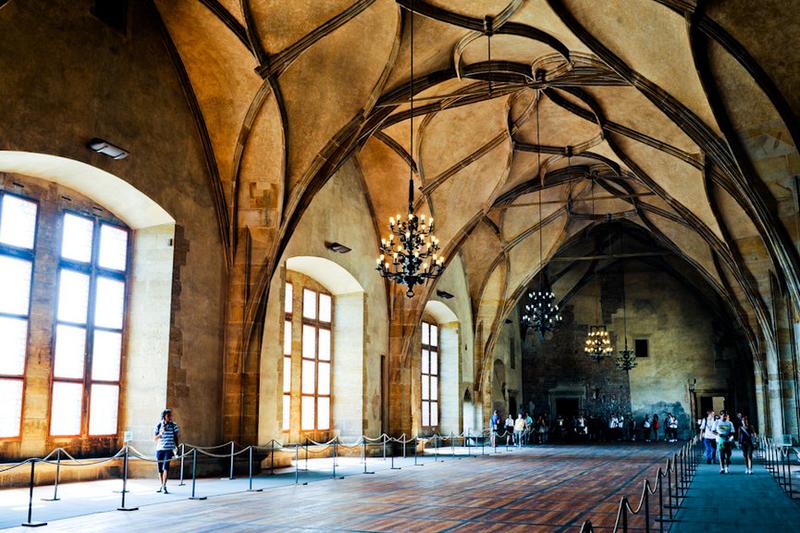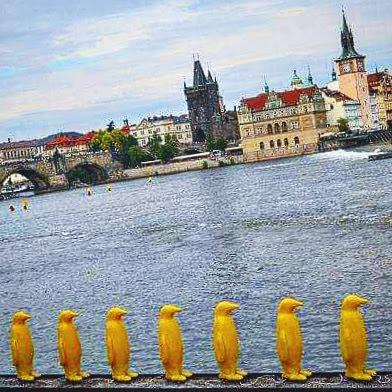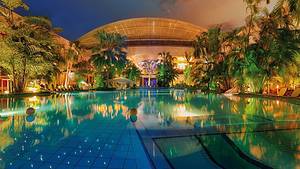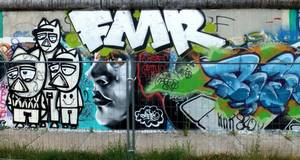Twelve-day self-drive tour of Central Europe
6 cities |
19 attraction(s) |
total distance 1018
km
 TIPS
TIPS
Day1
Day2
Day3
Day4
Day5
Day6
Day7
Day8
Day9
Day10
Day11
Day12
Day1: Prague
3 attraction(s) ·
2 km
1
Located in the heart of Prague, the Old Town area is home to many famous historical buildings. It is a beautiful place with buildings that have maintained their historic charm for hundreds of years, showcasing Prague's cultural heritage and unique architecture. Whether you are a tourist or a history enthusiast, exploring this area will be a rewarding experience. The Old Town not only features famous buildings like churches, courthouses, ancient squares, and bridges, but also many unknown yet equally beautiful buildings. Taking a stroll through the narrow streets of the Old Town, admiring the scenic beauty of these historic buildings is an unforgettable experience.
1
km
2
The Charles Bridge, situated in the city center of Prague, Czech Republic, was constructed in the 14th century over the Vltava River. This 520-meter-long and 10-meter-wide stone bridge is a highly valuable and historically significant piece of architecture. Located next to the Prague Castle complex and the Old Town, it was the mandatory route for coronation processions of the monarchs in the past.
As you stroll across the bridge, you can witness street performances by artists and a variety of handicrafts. There are also plenty of artworks to be found, such as watercolor paintings depicting the Charles Bridge and puppets dressed in traditional Czech and court attire.
With a total of 30 statues of saints, this is the oldest and longest bridge in Europe, and has become renowned as an open-air baroque statue museum of Europe, thanks to the masterpieces of Czech baroque artists from the 17th and 18th centuries. While many of the statues have been replaced with replicas, there are still plenty of artworks and cultural heritage to appreciate for the visitors. Notably, the eighth statue on the right-hand side of the bridge is the guardian of the Charles Bridge, St. John. In the middle of the fence lies a golden cross indicating the spot where he was thrown off the bridge.
1
km
3
Prague Castle was once the residence of the Czech royal family and is now the office location for the president and national government agencies. It is also a popular spot for viewing the beauty of the Old Town area. The castle houses the crown jewels of Bohemian Kingdom and is one of the largest ancient castles in the world, spanning 570 meters in length and around 130 meters in width. The three most important sights in the castle include St. Vitus Cathedral, Golden Lane, and the Old Royal Palace. St. Vitus Cathedral is the oldest building in the city, with a history of over 1000 years. The highlights of this magnificent grey-black Gothic building include 20th-century stained glass windows, the tomb of St. John, and the St. Wenceslas Chapel. The large stained glass windows were created by the famous painter Mucha. Golden Lane is a small and delicate road with romantic colored small houses on either side. It used to be the residence of servants and craftsmen and got its name from the many alchemists who worked for the kings. In the late 19th century, it became a slum, but after a change in planning in the mid-20th century, the houses were converted into various souvenir and handicraft shops. The famous writer Kafka's old home is also located here. Every day at noon, the Old Royal Palace holds an impressive changing of the guard ceremony, attracting many tourists.
Day2: Prague
2 attraction(s) ·
1 km
1
The National Museum in Czech Republic, the largest and oldest museum, presents a beautiful Renaissance-style main building. It brings together historical collections such as prehistoric archaeology and theater collections, as well as rich natural science collections, including mineral, geological, paleontological, and zoological treasures. The museum also regularly hosts symphony concerts that take you on a journey through the charm of history and art.
1
km
2
Wenceslas Square is one of the commercial and cultural centers of the New Town of Prague, covering an area of 41,803 square meters, 750 meters long and 63-48 meters wide. It is one of the most famous squares in Prague and a traditional venue for many historical events and public gatherings. The square is also known as Prague's "Champs-Élysées". The streets on both sides are lined with elegant classical buildings and shops from the early 20th century and is the city's most prosperous commercial area. The square is named after the patron saint of Bohemia, Saint Wenceslas. Wenceslas Street leads directly to the National Museum, with a statue of the ancient emperor Saint Wenceslas in front of it.
Day3: Prague > Kutna Hora > Brno
4 attraction(s) ·
191 km
3
Garlands of human skulls, plus a bone chandelier & chalices decorate this small Gothic chapel.
128
km
4
Day4: Brno
1 attraction(s) ·
0 km
1
Day5: Vienna
2 attraction(s) ·
1 km
1
Vienna State Opera, located on the Ringstrasse in the heart of Vienna, is one of the world's most renowned opera houses and a major symbol of Vienna. Built in 1869, its inaugural performance was Mozart's "Don Giovanni," and it quickly became the center of the opera world, earning the nickname "the world's opera capital."
The State Opera is a grand neoclassical building constructed with yellow marble. It features five arches on the main entrance, each representing heroism, drama, imagination, art, and love, with bronze statues of the five opera goddesses.
Spanning 9,000 square meters, the opera house has 6 tiers of seating. The walls of the foyers and corridors are adorned with magnificent oil paintings depicting scenes from the most famous works of celebrated composers, including Mozart's "The Marriage of Figaro," "The Magic Flute," and "Don Giovanni," Beethoven's "Fidelio," Rossini's "The Barber of Seville," and more.
During World War II, the stage of the Vienna State Opera was destroyed by Allied bombing, and in 1945, the entire building was consumed by fire. The opera house we see today is a reconstruction, completed in 1955 with over 2,200 seats, and it premiered with Beethoven's "Fidelio" conducted by Karl Böhm on November 5th.
1
km
2
Medieval Roman Catholic place of worship with an ornate spire, catacombs & a treasury museum.
Day6: Vienna
1 attraction(s) ·
0 km
1
Located in the center of Vienna's Ringstrasse, the Maria-Theresien-Platz, the Vienna Museum of Art History is one of the largest and most important museums in the world. Built with funds from the Habsburg family, the museum has 8 branches and 7 other branches in Vienna and Innsbruck. The art collection at the Vienna Museum of Art History spans five thousand years, from ancient Egypt through ancient Greece to the late 18th century. The museum's art collection focuses on the Renaissance and Baroque periods. The museum's collection is housed in several buildings, including the Picture Gallery, the Collection of Classical Art, the Kunstkammer, the Egyptian and Oriental Art Collection, and the Coin Collection. Visiting the museum's architecture itself is an extraordinary artistic experience, showcasing the grand dome hall and a wealth of Neo-Baroque decorations that are among the most magnificent interior decorations in Vienna, unmatched by other European museums.
Day7: Salzburg
2 attraction(s) ·
1 km
1
This ancient town is located within Austria and is renowned as one of its most beautiful. With a long history, it is filled with many fascinating stories that captivate the imagination and linger in the memory.
1
km
2
Mozart's birthplace is located at Getreidegasse 9, the main street in the old town of Austria. The yellow building, adorned with the Austrian flag and a piano-shaped music sign, is known as Mozart's House. Mozart's father, a violinist, lived with his family on the third floor of this building from 1747 to 1773.
In 1880, the first Mozart museum was established here and gradually transformed into today's Mozart's Birthplace Museum, attracting thousands of Mozart and classical music enthusiasts. Visitors can explore the rooms where Mozart and his family lived, admire historical instruments, documents, portraits, memorabilia, and the Mozart family's correspondence.
The renovated museum has sparked controversy among locals, as some believe that the museum designers did not fully understand Mozart and failed to preserve the true appearance of Mozart's family home. The author has visited both versions of the museum, and the current version is more modern and lacks traditional charm, but it provides a more comprehensive display of Mozart's works. For example, there are models and detailed explanations of Mozart's famous operas on the second floor, which is a great delight for professionals and enthusiasts. Personal preferences may vary regarding the changes made to Mozart's birthplace.
Please note that wheelchairs or mobility scooters cannot be used inside the museum.
Day8: Salzburg
1 attraction(s) ·
0 km
1
Salzburg Fortress, located on a hill in the old town area, was built in 1077. It is one of the largest medieval castles in Europe and is an iconic landmark within the city of Salzburg. With over 996,000 visitors annually, it has become a popular tourist attraction in Austria. In addition to its museum showcasing ancient weapons, instruments, and folklore, the fortress also has a café where visitors can enjoy panoramic views of the magnificent scenery below. Regular classical chamber music concerts are held inside the castle, featuring popular classical music.
The open spaces along the north and south walls of the castle have become popular spots for photography enthusiasts to capture city landscapes. The nearby Nonnberg Monastery Church, located halfway up the hill near the castle, is another popular spot for photo opportunities. Although the monastery is small, it has a rich history and can be reached via a flat path behind the mountain.
Friends with a valid Salzburg residence permit can enter the castle for free, but they must hike up the hill and present valid ID to obtain their tickets. This special offer has been in place for several years, but the duration of this promotion is unknown.
Day9: Budapest
2 attraction(s) ·
1 km
2
Located on Castle Hill in Budapest, Hungary, the building, known as the "Royal Palace" or "Royal Castle," occupies two-thirds of the entire area. The history of Buda Castle dates back to 1247, when Hungarian King Bela IV built the castle to prevent invasion by the Mongols. Later, Luxembourg King Sigismund converted the original building into a Gothic-style palace. From 1541 to 1686, the Ottoman Turks occupied Budapest, and the castle was used as a military camp and mosque. In the 17th century, the Habsburg dynasty drove out the Turks and rebuilt Buda Castle in the Baroque style. Today, Buda Castle is a museum and art gallery in Hungary, open to visitors for sightseeing. In 1987, the United Nations Educational, Scientific and Cultural Organization (UNESCO) listed Buda Castle as a World Heritage site.
Day10: Budapest
1 attraction(s) ·
0 km
1
The Hungarian National Museum is located at 14-16 Museum Ring, District VIII, Budapest. The building was designed in the Neoclassical style by the renowned architect Mihály Pollack between 1837 and 1847. The museum features seven permanent exhibitions showcasing artifacts from various periods of Hungary's history, offering a moving glimpse into the rich Hungarian culture spanning a thousand years.
Day11: Budapest
1 attraction(s) ·
0 km
1
Day12: Budapest
1 attraction(s) ·
0 km
1






































